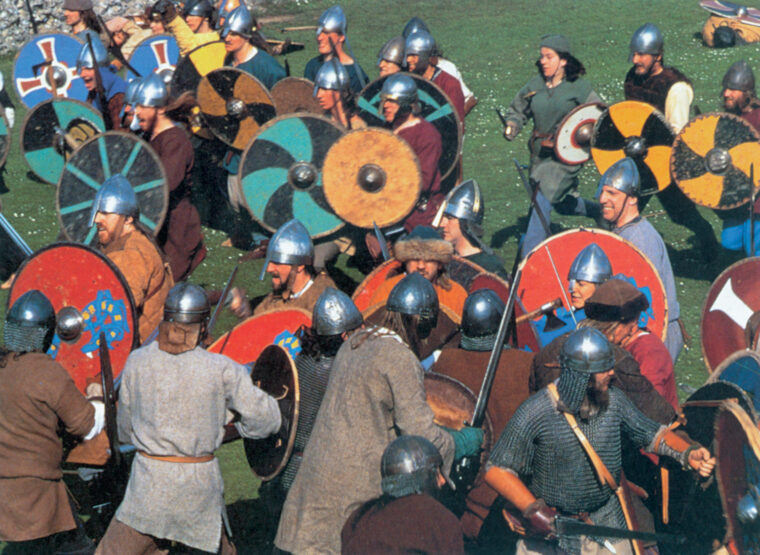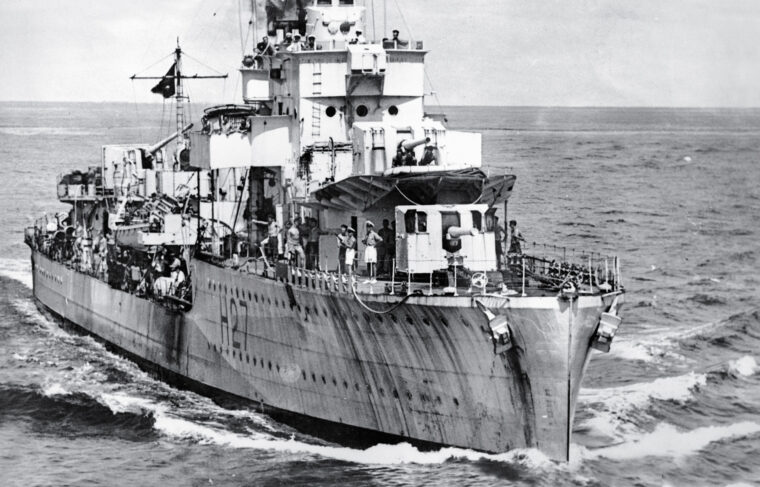
Norway
Viking Tide: Alfred the Great during the Danish Invasions
By Eric NiderostIt was the custom for King Alfred of Wessex to celebrate the Twelve Days of Christmas at his royal palace at Dorchester, in the county of Dorset. Read more

Norway
It was the custom for King Alfred of Wessex to celebrate the Twelve Days of Christmas at his royal palace at Dorchester, in the county of Dorset. Read more

Norway
The German mountain troops were dug into their shallow, frozen foxholes waiting for the enemy ski troops to appear across the horizon. Read more

Norway
War clouds gathered rapidly once Germany invaded Poland on September 1, 1939. Allied demands that Hitler withdraw his armies went unheeded. Read more

Norway
Following the forced evacuation of Allied forces at Dunkirk in June 1940, British leaders viewed a dim future. Read more

Norway
For many history buffs, the date 1066 conjures up an image of Norman knights breaking through the shield wall of the ax-wielding Anglo-Saxons at Senlac Hill. Read more

Norway
The fundamental pillars of war—strategy and tactics— inevitably depend on an imponderable and uncontrollable factor: the weather. With the increasing sophistication of weather data gathering, analysis, and forecasting in the early 20th century, predicting the weather became an integral part of World War II. Read more

Norway
Norway had been able to avoid the massive bloodletting of World War I entirely and fervently hoped to steer clear of World War II as well through a policy of strict neutrality. Read more

Norway
By John W. Osborn, Jr.
When world war engulfed Europe for the second time in a generation, the Netherlands placed its faith in the diplomatic delusion that it could remain neutral like it had during World War I. Read more

Norway
By Mark Simmons
“U-64 was seen on the surface at the top of Herjansfjord near Bjrekvik. I selected the two anti-submarine bombs and put the Swordfish in a dive and released the bombs at 200 feet. Read more

Norway
Early in 1944, German Field Marshal Erwin Rommel, the defeated hero of North Africa and now head of Army Group B in France, was tasked with strengthening the Atlantic Wall defenses against Allied invasion. Read more

Norway
On the surface it may seem odd that men of conquered nations would eagerly sign up to fight for their masters, but that is exactly what happened in Scandinavia in the 1940s. Read more

Norway
Norvald Flaaten never expected he would appear in a movie when he signed up with the Canadian Army during World War II, but the subject of the movie and what he had to do was too good to pass up. Read more

Norway
The Bug was in deep trouble. On a top-secret flight over occupied Norway, this ancient, war-weary C-47 Skytrain transport aircraft became the helpless target of German antiaircraft guns, all firing desperately to bring down the transport and its precious cargo. Read more

Norway
The great waves were huge and black, greedy tentacles of the North Sea clawing and snatching at the battered ships struggling in the icy dark. Read more

Norway
The Germans could not believe it. Without suffering the loss of a single soldier or sailor, the German Army and Navy had sailed 1,500 miles through waters dominated by the British Royal Navy and captured Narvik without firing a shot, bagged nearly 500 Norwegian soldiers, seized one of Norway’s major military depots, and even taken five armed British merchant ships and their crews. Read more

Norway
During World War II British and American aircraft carriers, serviced and ready for naval combat, averaged 20,000 to 30,000 tons. Read more

Norway
By mid-1942, the towering German battleship Tirpitz stood alone as the largest, most powerful warship in the world. Read more

Norway
On Sunday, September 3, 1939, the day that Great Britain and France formally declared war on Germany after the Nazis’ invasion of Poland, the German supply ship Altmark concluded her stay at the refinery center of Port Arthur, Texas, where she had taken on a full cargo of diesel oil, and returned to sea. Read more

Norway
Within hours of the entry of Great Britain and France into World War II on September 3, 1939, the British liner SS Athenia was sunk by a German U-boat off the northwestern coast of Ireland, with the loss of 112 dead, including 28 American citizens. Read more

Norway
In August 1942, with Operation Barbarossa at its height, the invader in coal shuttle helmet and field gray uniform crawled on his elbows through brush up the hillock, pistol in his right hand. Read more